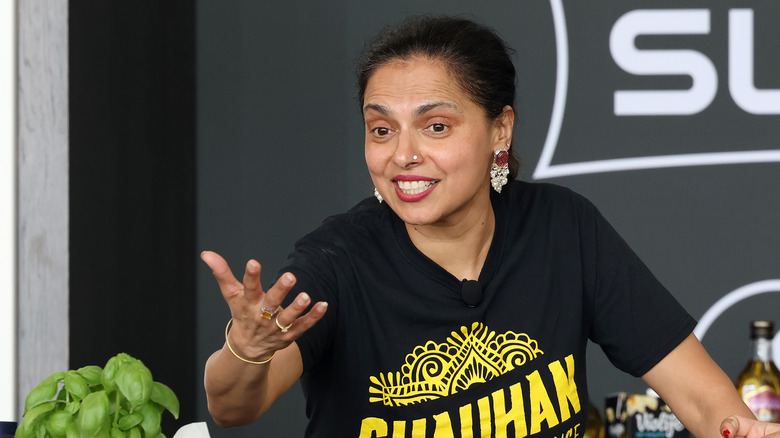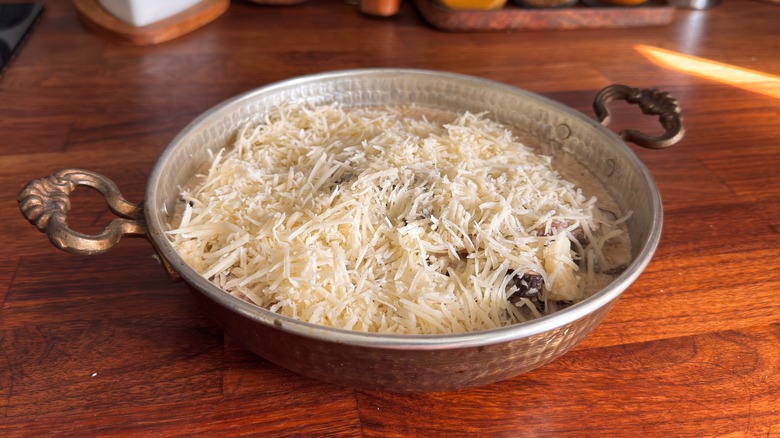How To Make Perfect Basmati Rice, According To Maneet Chauhan
While long-grain white rice continues to be the standard for traditional American recipes, most supermarkets these days carry a wide range of rice types, each one of which might require slightly different cooking techniques. This is true for basmati rice, but TV chef Maneet Chauhan recently posted a video on Instagram sharing her advice for preparing this variety which is commonly used in Indian cuisine.
Chauhan's first tip comes straight out of Ina Garten's playbook, since she advises using "good" rice. Assuming you have a choice available where you shop and know which brand is supposed to be better, go with that one. Moving right along, she says the proper rice to water ratio is 1:2, unless you've pre-soaked the rice, in which case it should be 1:1½. While some recipes do advise pre-soaking basmati rice for 20 to 30 minutes, Chauhan feels this isn't necessary. She advises rinsing it in cool water until the water runs clear to get rid of excess starch.
When the rice and water are in the pot, Chauhan recommends adding both salt and butter, explaining that the latter will make the rice richer. She says to let the water come to a boil, and, once the water and rice reach the same level, cover the pot for 10 minutes and allow it to simmer over low heat. When the rice is done, she advises letting it rest, then fluffing it with a fork before eating it.
What you should and shouldn't do with basmati rice
One thing about basmati rice that makes it quite different from long-grain white rice is that it has a very distinct flavor, often described as both nutty and floral. It's traditionally used in South Asian dishes such as biryani and dosa as well as in Middle Eastern recipes, including the Persian crunchy rice dish called tahdig. Basmati rice can also be served on its own as a side or used to make rice and beans, rice bowls, rice pilaf, or rice salad.
If you opt to use basmati rice in a rice pudding recipe, be aware that its flavor will be quite noticeable. This is true of horchata, as well — while some people enjoy the drink made with basmati rice, it won't taste the same as if it were made with a more neutral variety. The texture of basmati rice can also affect its suitability for certain dishes. For one thing, basmati rice is a lot less sticky than jasmine rice, which means that while it works for thick Indian-style curries, in thin, Thai-style ones it may become soupy or float off the plate. It also won't hold together nearly well enough to be used in sushi.
For the most part, however, when and where to use basmati rice is a matter of personal preference. If it's your favorite kind of rice (and you've mastered Maneet Chauhan's tips for making it), go ahead and incorporate it into any dish you choose. (Just maybe eat that thin curry in a bowl.)

